Is The Nikon D400 A Full Frame Camera?
Best total-frame camera 2022: the top big sensor DSLRs and mirrorless cameras
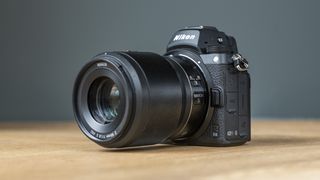
Searching for the best full-frame photographic camera? This guide volition assistance yous find it. From flagship mirrorless models to high-end DSLR cameras, we've tested all of the top full-frame options. So whether you're upgrading from an older model or getting into full-frame photography for the kickoff fourth dimension, this is the list you lot need.
What'southward the best full-frame camera you can buy? For us, it's a chip of a tie between the Sony A7 Four and Canon EOS R6. Sony'due south hybrid marvel offers more resolution thank you to its 33MP sensor, only the EOS R6 edges information technology for outburst shooting and moving subjects. If y'all need an all-rounder, both should exist near the superlative of your shopping list.
Just that doesn't mean there aren't cheaper alternatives you should consider. Nikon fan? You'll probably prefer the Nikon Z6 Two – a polished hybrid camera with plenty of performance. Similar the Catechism EOS R6, information technology delivers excellent prototype quality and exemplary handling, provided you're happy with a touchscreen that only tilts.
We oasis't forgotten Sony photographers. The Sony A7 Four is a worthy successor to the pop A7 III, combining stellar stills abilities with solid video specs to create a Goldilocks option for many people. That said, if you've got a much bigger budget, yous should consider the massively powerful Sony A1. A full-frame flagship with world-beating specs, it features a 50.1MP sensor, ultra-fast autofocus, extremely speedy outburst shooting, plus 8K video at 30p.
Looking for a more affordable full-frame camera? If you've got a limited corporeality to spend, we recommend taking a look at the Canon EOS 6D Mark II. Information technology's older than a lot of models in this list, but continues to offering reliable prototype quality, a healthy set of features and excellent value for money.
Whatever you want from a total-frame camera, you'll observe the right option in the listing beneath. Nosotros've included our pick of the latest releases, as well equally a handful of niche models which deliver the appurtenances for specific types of photographers (such as sports or wild fauna enthusiasts). We've also covered a range of slightly older cameras which represent great value in 2022.
We update our guide regularly with new reviews, and so y'all'll always know which choice comes top. We're currently testing the Nikon Z9, for case, which is the manufacturer'due south most powerful camera ever (complete with 45.7MP full-frame sensor and 8K video). Non certain where to start? Scroll to the lesser for handy buying tips to help yous observe your ideal full-frame camera.
- Best camera 2022: 10 of the best cameras you tin buy correct at present
All-time full-frame cameras in 2022:
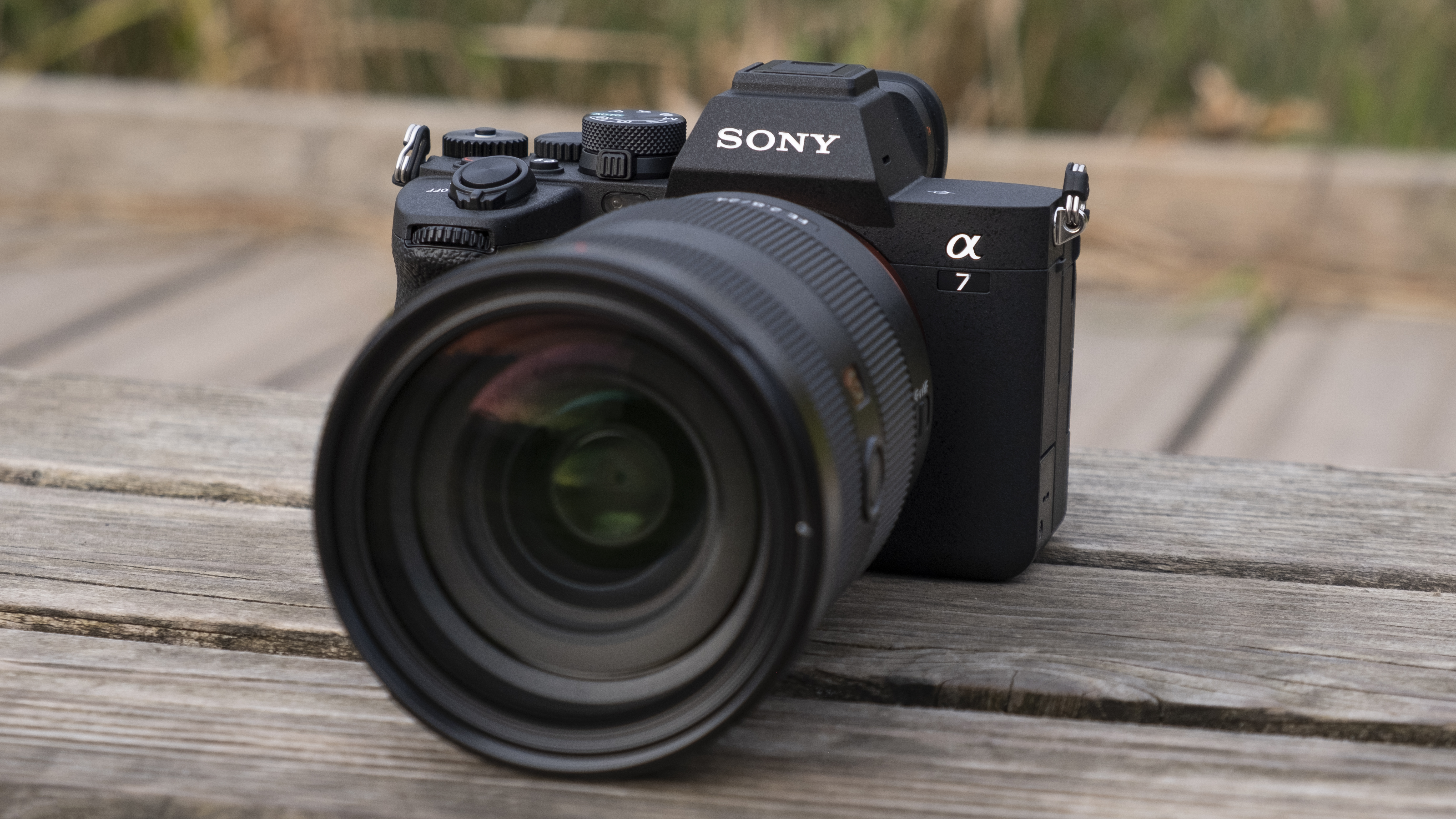
Sony'south A7 III has long been a full-frame favorite among enthusiasts, so improving on its superb skill set was never going to be easy – but the A7 Iv more than delivers. A price increase means information technology'southward non quite the entry-level selection that its predecessor was, but there are plenty of improvements to justify the inflation. While a new 33MP sensor doesn't dramatically better the quality of still images, it does contribute to a versatile shooting feel that'south better all round.
Powered by a Bionz XR processor, this is a hybrid photographic camera that's good in nigh any state of affairs. Though at that place's a crop on 4K footage, Eye AF and 10-fleck support also give it proper video chops. Sure, information technology's not the easiest camera for beginners to get to grips with. Nor is information technology the best value for purist stills photographers. Merely add a huge CFexpress card buffer into the mix and the Sony A7 IV shapes up as a compelling full-frame all-rounder.
- Read our in-depth Sony A7 Four review

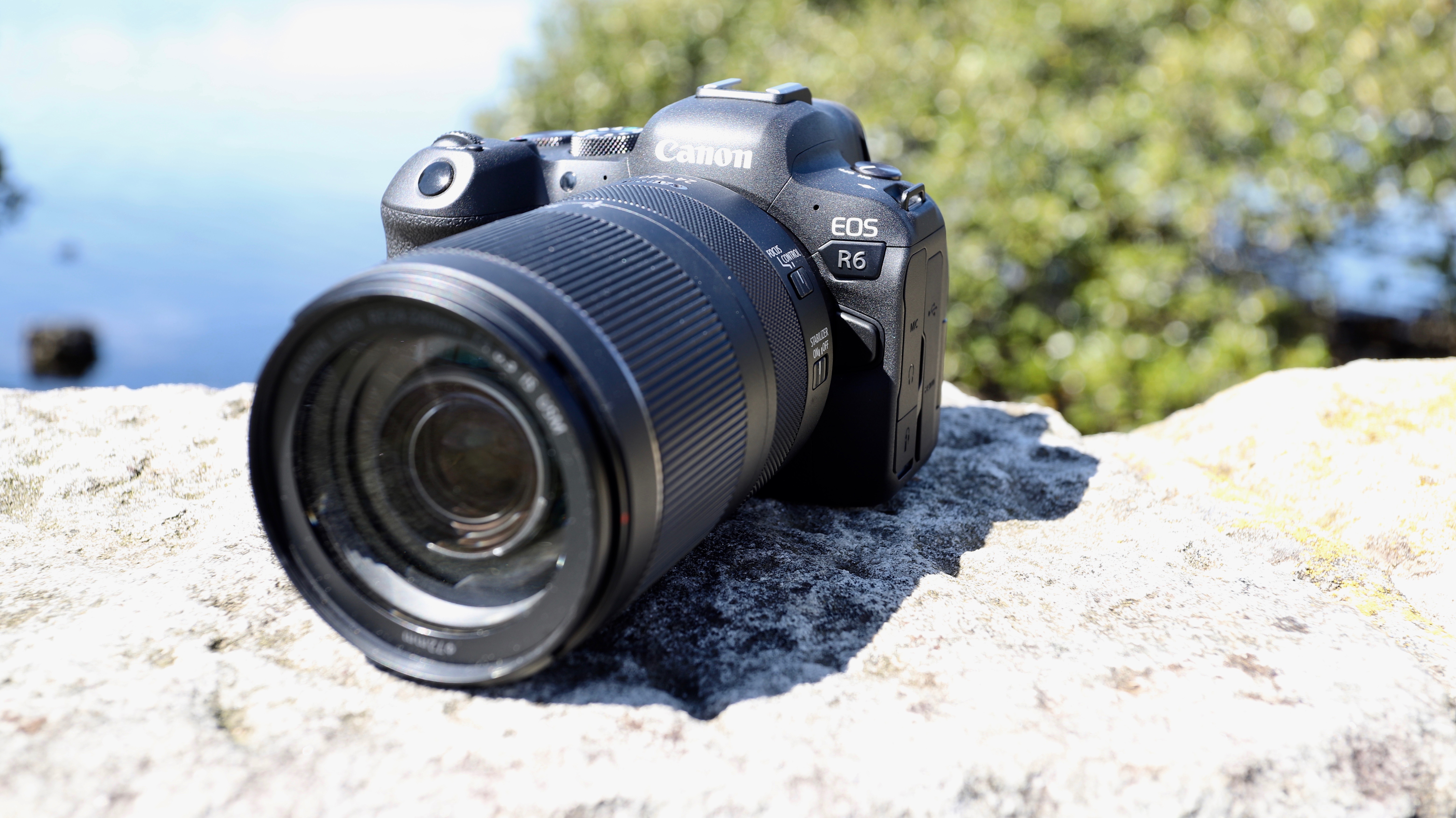
A more affordable version of the powerhouse EOS R5, Canon'due south EOS R6 might well become Canon's most pop camera – and for good reason. An ergonomic design means the R6 is comfortable for all-day use and, paired with Canon's outstanding first effort at in-torso image stabilization, proves an absolute pleasance to shoot with.
Its video specs can't rival the R5's 8K skills, simply shooting 4K/60p beyond the total width of the sensor is hardly shabby. In whatever case, Catechism has made clear the EOS R6 is a stills photographic camera first and foremost. And information technology's an fantabulous one: 12fps mechanical outburst speeds jump to 20fps when you switch to the electronic shutter, while the addition of Dual Pixel CMOS autofocus to the 20.1MP sensor results in a significant improvement to autofocus and tracking performance.
The EOS R6'due south sensor resolution won't grab headlines and JPEG dynamic range can be a trivial disappointing, with a lack of detail in highlights and shadows, merely overall prototype quality is nonetheless darn skillful. There's no question that the EOS R6 represents a massive upgrade from the EOS 6D Mark II – or even the EOS R and EOS RP – though its performance doesn't come inexpensive.
- Read our in-depth Catechism EOS R6 review

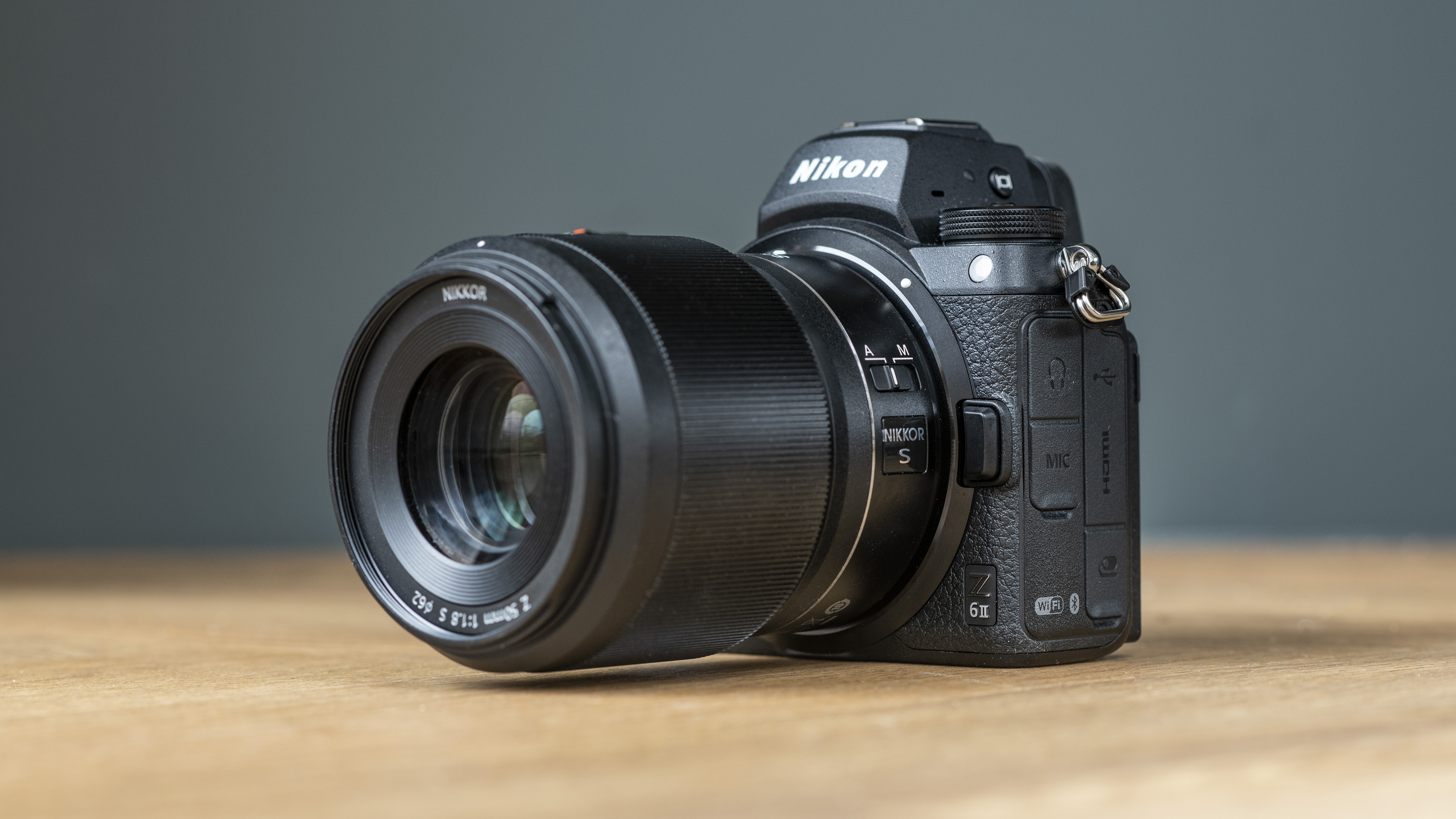
With a groovy blend of performance, handling and value, the Nikon Z6 was 1 of our favorite full-frame mirrorless cameras. The Z6 Ii takes that very capable base and smooths out a few wrinkles to deliver an fifty-fifty more polished shooting experience.
Unchanged is the 24.5MP CMOS sensor, which continues to capture excellent detail and plenty of dynamic range. The main add-on is a second EXPEED half dozen image processor, which boosts flare-up shooting to a maximum of 14fps and improves autofocus performance. Video has also been enhanced, with a firmware update due in February 2021 prepare to unlock 4K capture at 60p, to compliment the new 10-bit HLG HDR output option.
In the manus, magnesium alloy body parts, weather sealing and a comfy grip make the Z6 Two experience more durable than rivals, while a new UHS-Ii SD card slot resolves one of its predecessor's key weaknesses. Though the updates might seem relatively small-scale, the Z6 II is an even more competent all-rounder as a issue, making it the nigh consequent total-frame camera you can purchase.
- Read our in-depth Nikon Z6 Ii review

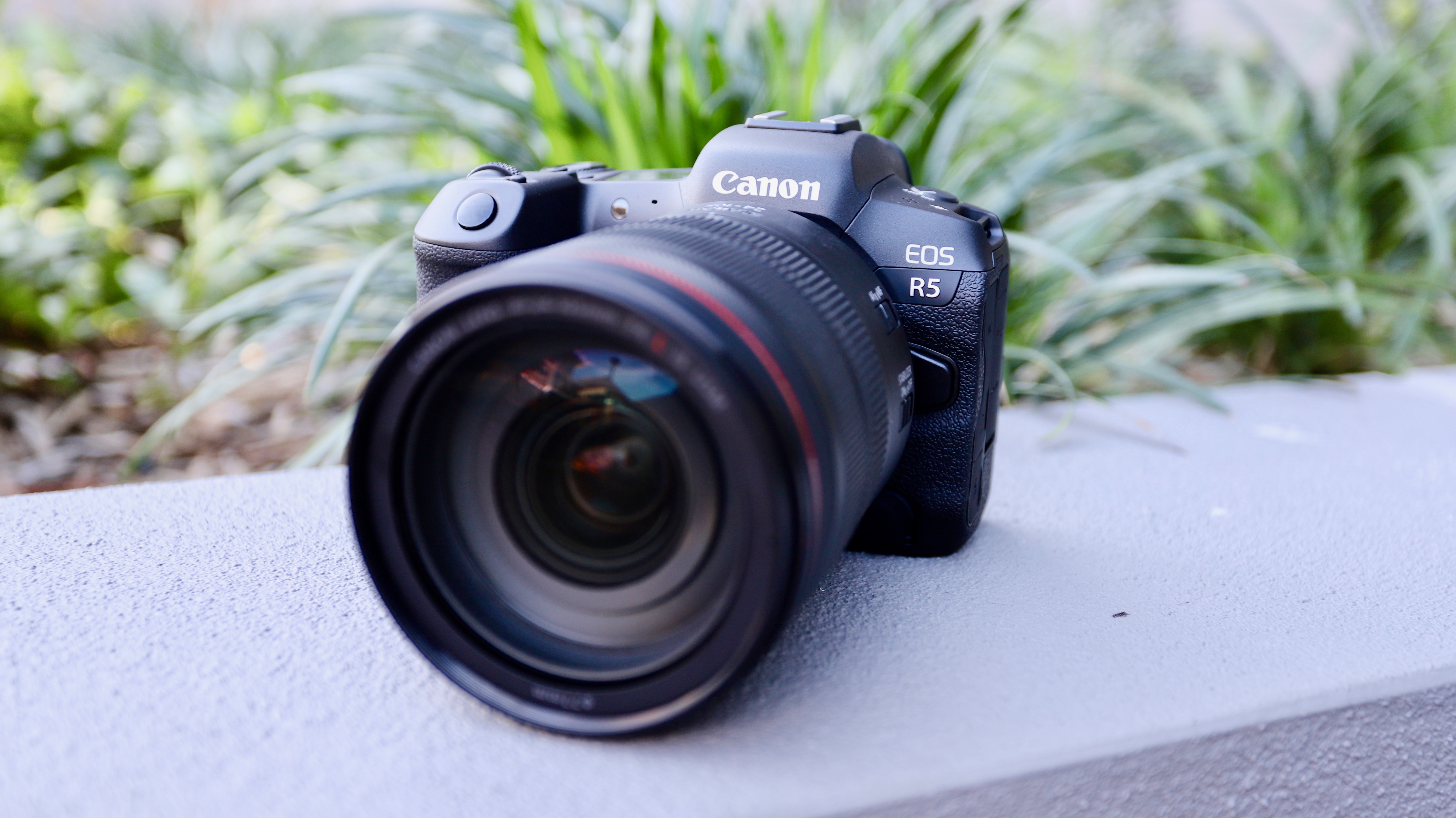
As its spec sheet confirms, the new Canon EOS R5 is an incredibly powerful tool. In fact, it'south Canon's best mirrorless photographic camera to date. The 45MP full-frame sensor is infrequent, producing superlative images in low light, with fantastic noise-handling fifty-fifty by ISO 4000.
Next-gen Dual Pixel autofocus, backed up by Canon's Digic X processor, is similarly splendid, with outstandingly authentic tracking and animate being detection skills that volition blow away safari shooters. The electronic shutter also delivers rapid 20fps continuous shooting, completing a packet that'southward as capable on the street as information technology is in the studio.
Less solid are its hybrid credentials: while it's hard to ignore 8K footage at up to 30fps – and 4K at upwards to 120fps – the R5'due south versatility for videographers is limited by heat restrictions on recording times, with long 'cool down' periods. What's more than, the EOS R5 represents a serious investment, especially if you shell out for the speedy CFexpress cards needed to unlock its ultimate performance. Merely if money is no object, it'due south arguably the elevation full-frame option for stills photographers.
- Read our in-depth Canon EOS R5 review


It might seem like a minor upgrade over the original Z7, just this second-generation of Nikon's mirrorless model features just enough tweaks to make it a compelling suggestion.
Physically it's very familiar, retaining the excellent grade cistron and handling of the Z7. Also the same is the 45.7MP full-frame sensor we raved about before, which continues to evangelize sharp detail from border to edge, as well equally class-leading dynamic range. One of the key revisions is processing power: twin Expeed six fries serve up speedier all-round functioning, with improved autofocus, including quick and reliable eye-detection AF.
Deeper buffers mean 10fps burst rates can be sustained for longer, while a pair of SD/CFexpress card slots enhance versatility. Video features have been improved, as well, with internal 4K 60fps and Full HD 120fps now possible. Certain, it might non tread much new ground, only ambitious pricing adds to the appeal of the Z7 Ii, as does a growing catalogue of Z system lenses and accessories. If you're looking to switch from a Nikon DSLR, it's well worth considering.
- Read our in-depth Nikon Z7 II review

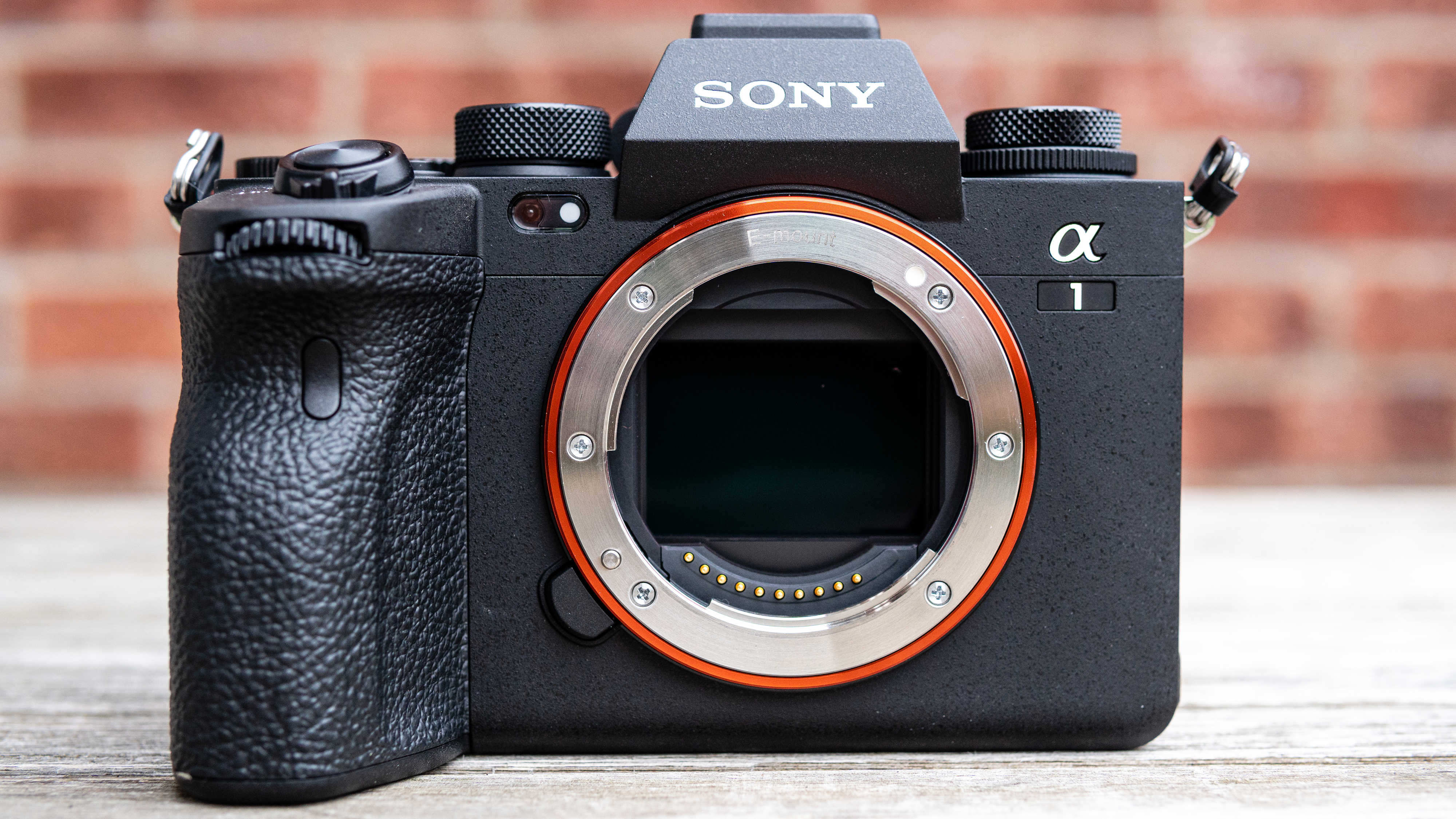
Remarkable in every respect, the Sony A1 is all the camera you could ever desire – provided yous've got deep pockets. Its 50.1MP full-frame sensor delivers image quality that's second-to-none, backed up by ultra-rapid autofocus and blistering burst speeds. Besides capturing incredibly detailed high-resolution stills, it tin can also shoot 8K raw video at 30fps, while pro connectivity options allow for loftier-speed workflows. Physically, the A1 is a familiar, well-counterbalanced alloy of the best bits from Sony's A7 and A9 series models, complimented past a 9.44-1000000-dot OLED EVF which more than makes up for the boilerplate screen. If you tin go to grips with the slightly circuitous carte du jour organization, the A1's outstanding skills set a new benchmark for mirrorless performance – whether you're shooting studio portraits, sports activity or wildlife footage. There are specialist cameras which offer better value, but for the ultimate in full-frame versatility, the Sony A1 is height of the pile.
- Read our in-depth Sony A1 review

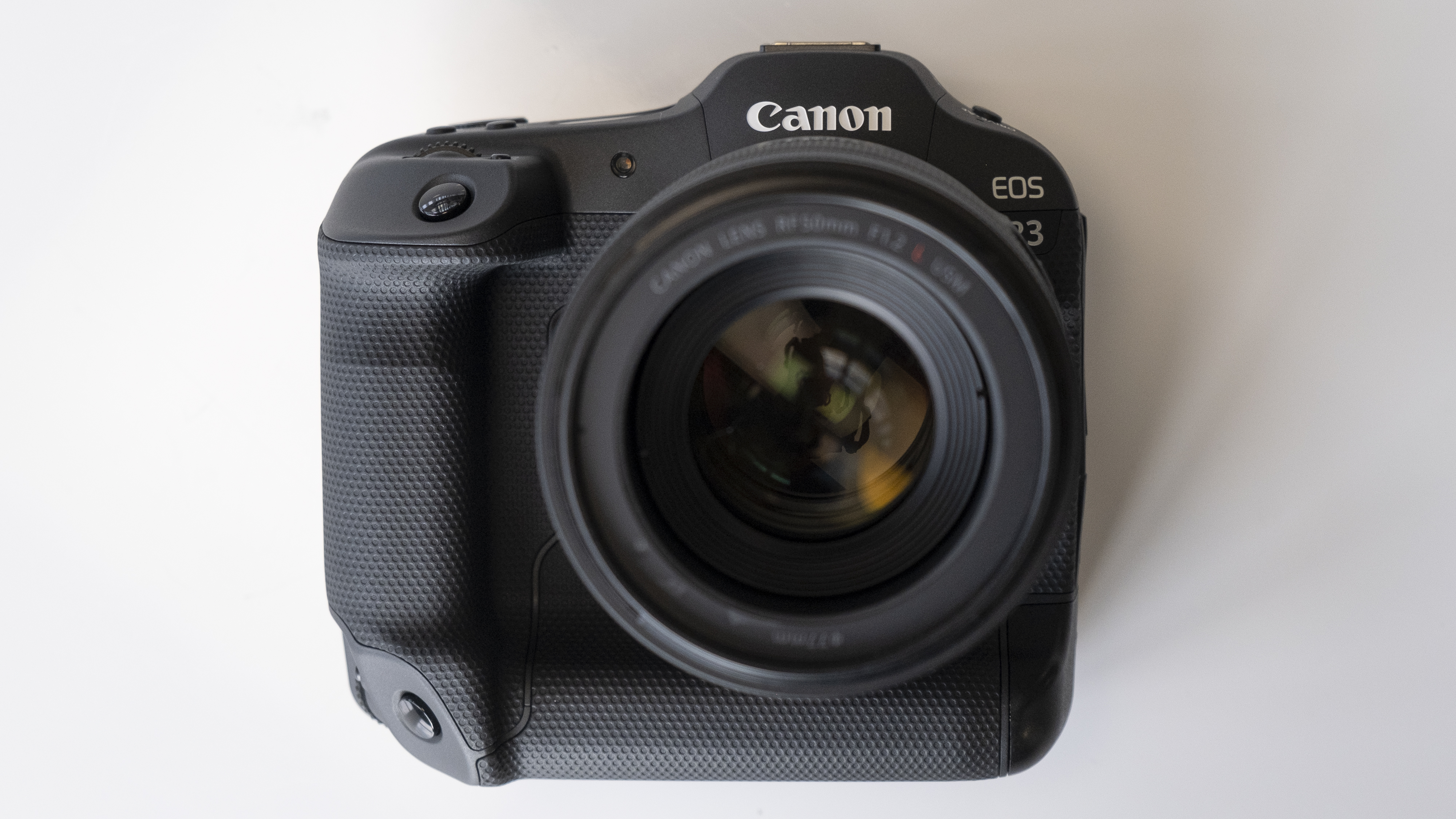
At first glance, the Canon EOS R3 looks like a chunky DSLR camera from a decade ago. Only don't allow its form cistron fool you: that former-schoolhouse body is packed with cutting-edge tech. Chief among the advancements is the 24.1MP full-frame sensor. While its pixel count might sound depression, the stacked design equips the R3 with a rapid engine that tin deliver 30fps raw outburst shooting. It also minimizes rolling shutter when shooting 6K raw video internally at 60p.
Paired with an articulating touchscreen and enhanced autofocus tracking (including Eye Control AF that lets you select focus points by looking through the EVF), the EOS R3 represents a rare combination of talents. In fact, it's one of the most advanced fast-activity cameras ever fabricated – and with a rugged magnesium alloy crush, it's sturdy plenty to survive safaris and sporting events alike. The grab? Its toll is equally bulky as its trunk. But while it's clearly overkill for amateurs, the R3 sets a new standard for professionals who want the ultimate in speed, quality and operation.
- Read our in-depth Canon EOS R3 review

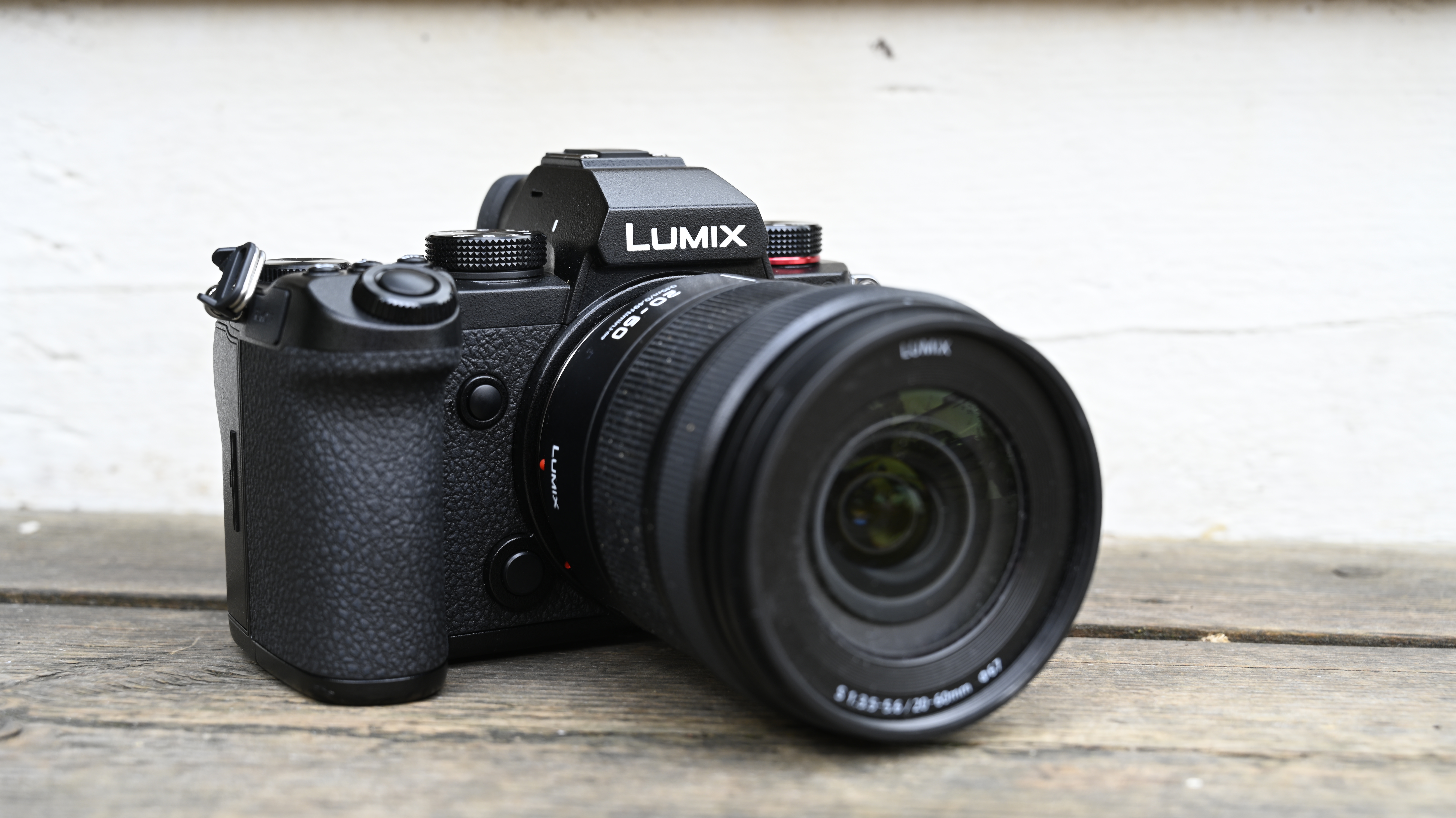
Combining a full-frame sensor with a compact but ergonomic body, the Lumix S5 shows that Panasonic has learnt lessons from its early total-frame mirrorless models.
At its middle is the same 24.2MP sensor found in the S1, which nosotros already know is capable of producing fantastic imagery. Paired with improved autofocus, a fully articulating touchscreen and the selection to shoot uncropped 4K at 30p – plus x-bit internally – the Lumix S5 makes an splendid travel camera for vloggers and stills photographers akin.
At that place are, of course, a few compromises every bit a upshot of its smaller, lighter body: the 2.36m-dot electronic viewfinder offers less than half the resolution of the S5's older siblings, while the maximum continuous frame charge per unit is adequately pedestrian at 7fps. Plus some of the larger L Mountain lenses significantly increase the size of the whole organisation.
All the same, the Lumix S5 is an extremely functional total-frame hybrid. It's comfortable to shoot with and capable of producing excellent results in a range of lighting conditions, yet takes up less satchel space than the GH5.
- Read our in-depth Panasonic Lumix S5 review

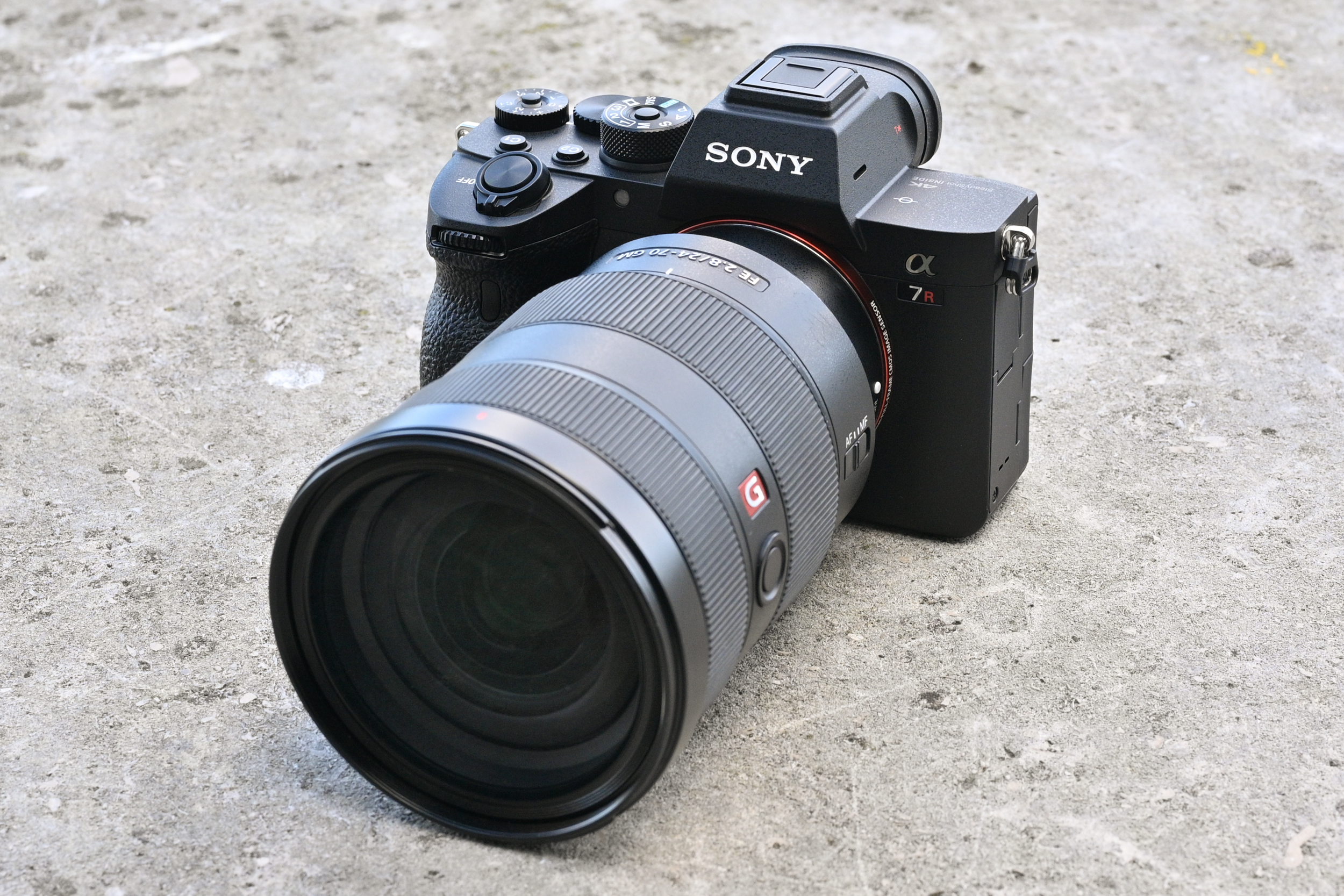
The A7R IV is the studio-friendly camera in Sony'due south full-frame line-upward, albeit i that'south just equally at habitation shooting action or landscapes. It has an extremely loftier resolution 61-megapixel sensor, up from 42.4 megapixels in the last version. Such a high pixel count lets the camera retrieve incredible amounts of detail when mounted to a sturdy tripod, in controlled lighting. Dissonance predictably creeps in more than quickly than in a lower-resolution full-frame model, but this is an excellent all-circular photographic camera. And while it demands careful shooting for the best results, effective stabilization means it all the same works well handheld. 4K video quality is great too, bated from some rolling shutter effect.
- Read our in-depth Sony Alpha A7R Four review

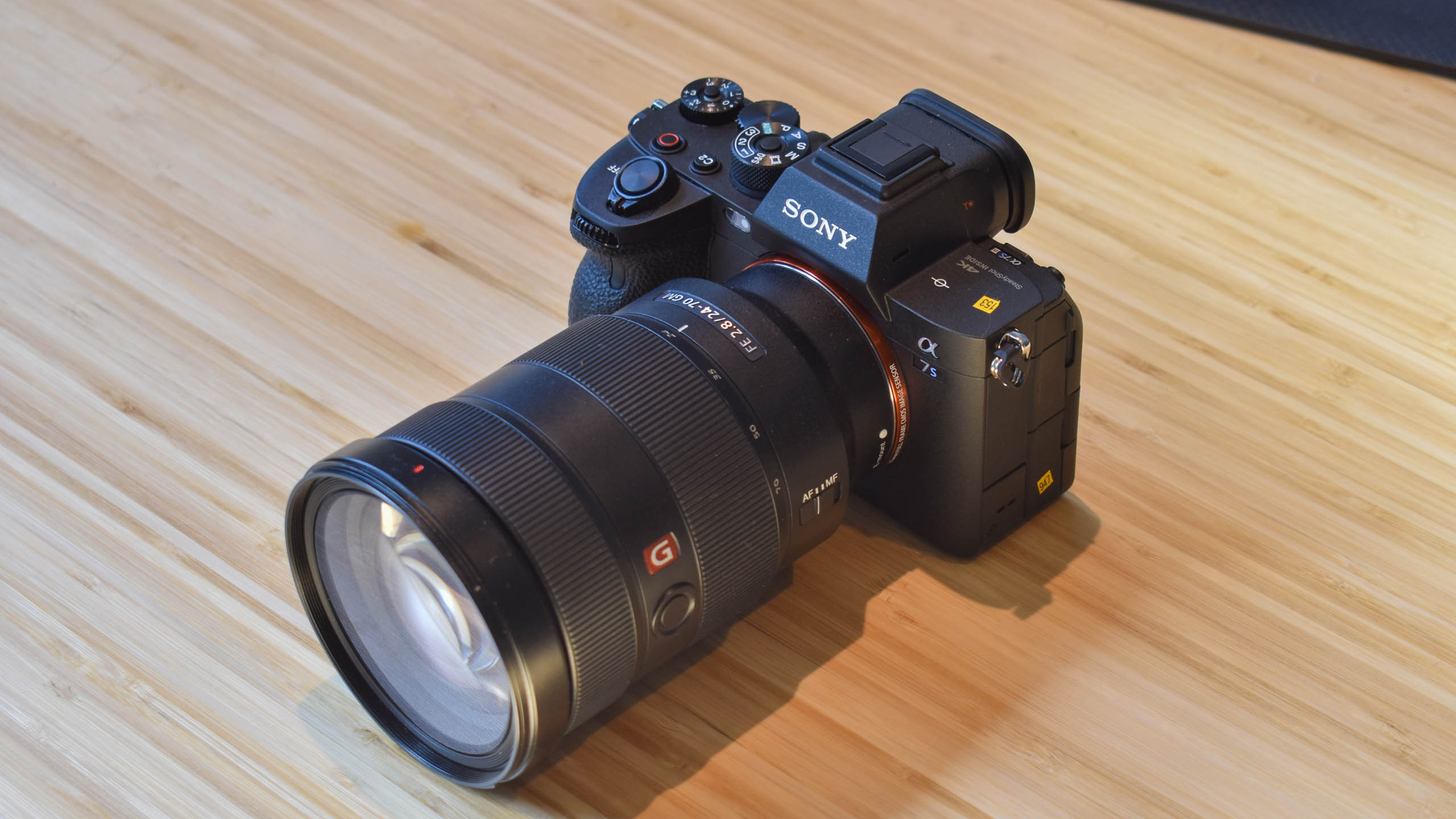
It was a long time coming, but the Sony A7S III was well worth the wait for video shooters. A complete overhaul of its predecessor, this video-focused full-framer brings a new articulating touchscreen, touch on interface, full-sized HDMI port and improved in-body prototype stabilization. Perhaps nigh chiefly, the combination of a new back-illuminated 12.1MP total-frame sensor and Bionz XR processor delivers hugely impressive image quality, especially at loftier ISOs, plus a powerful autofocus organisation that gives you more granular control than before. Yes, that 12.1MP resolution is a touch on on the low side for stills shooters, just the A7S III certainly shouldn't be discounted every bit a hybrid camera, particularly if you lot mainly have photos for social media or thumbnails for your video content.
- Read our in-depth Sony A7S 3 review


A dead-ringer for the Nikon Z6 (above), Nikon's latest large-sensor effort is the all-time entry-level full-frame mirrorless camera on the market place. As a beginner'south option, information technology ticks a lot of boxes. Its weather-sealed body features a big, comfy grip and a slap-up control layout that'south accessible in the paw, with a iii-inch tilting touchscreen that makes menu navigation a cinch. The 24.2MP full-frame sensor inside serves up lovely images in a range of shooting scenarios, while the big, bright EVF is fantastic for framing shots. Autofocus is very impressive, besides, with the 273-signal hybrid system working well for both static and moving subjects. There are some compromises, though: the 4.5fps burst speed is underwhelming, while a 1.7x crop on 4K footage is disappointing. And if you regularly shoot in low-light, the back-illuminated sensor of the Z6 performs ameliorate at higher ISOs. Nevertheless, the Z5 delivers plenty for those looking for their start full-frame photographic camera – provided you have a salubrious budget. It's pricier than several rivals and, equally the cost of the older only more capable Z6 continues to fall, buyers volition take a catchy selection to make.
- Read our in-depth Nikon Z5 review

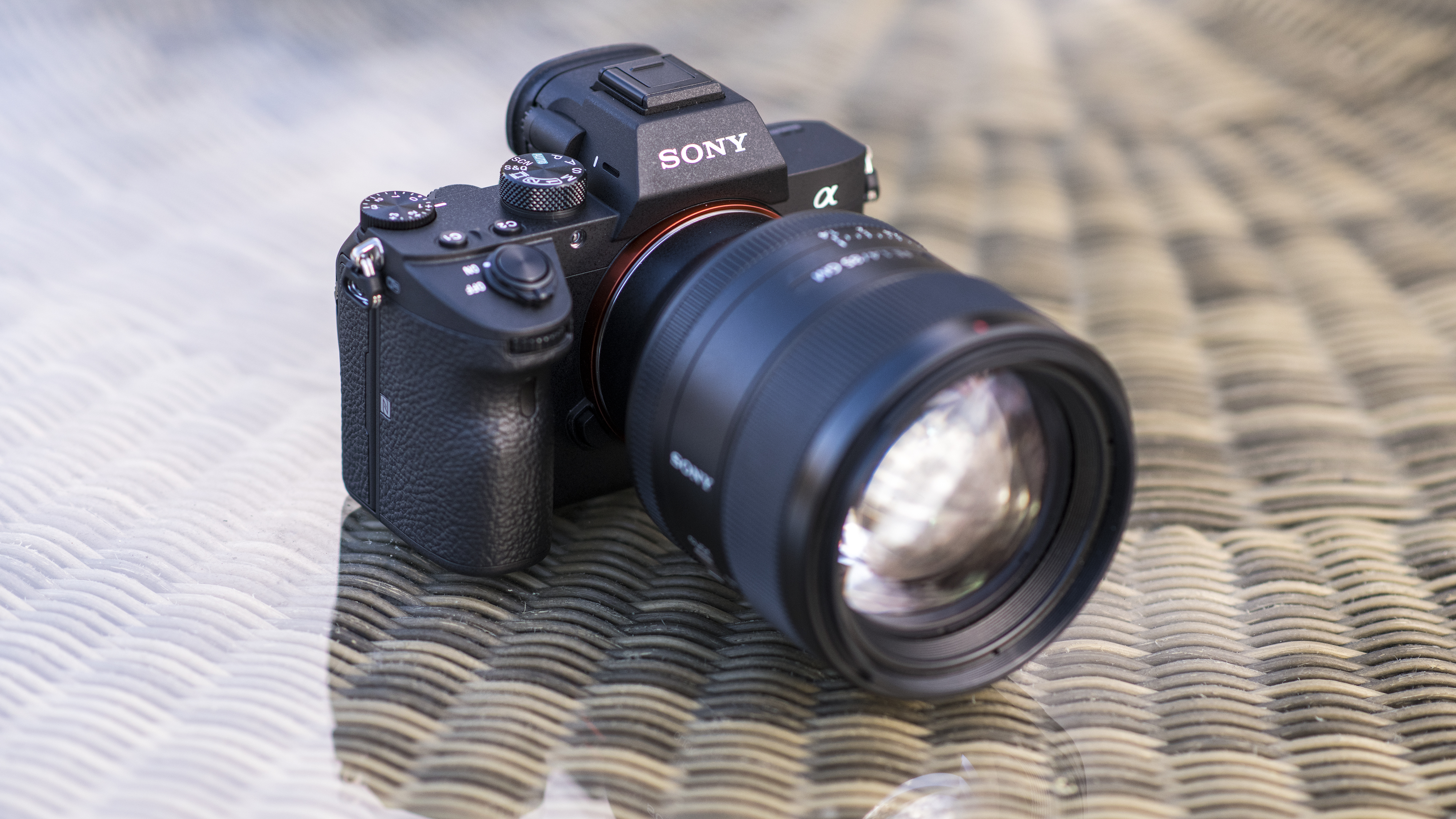
The A7 Iii has become a firm favorite among enthusiasts and pros these last few years, and for good reason. In dissimilarity to the more niche A7R Iv and A7S Ii, the A7 Iii is a photographic camera for everyone, whether they shoot stills or videos, action or static subjects, indoors or out.
The sensor has a modest 24MP resolution, but its backlit design makes for better light gathering, while the reward of sensor-based stabilization means yous don't need to worry about this beingness in your lenses, which is something many other mirrorless cameras don't take as standard.
Add to that a 710-shot battery life – impressive for a mirrorless camera – a slew of video-specific features and the EyeAF feature for tack-sharp portraits and you take yourself quite some camera, despite its relative one-time age. The rumors of a Sony A7 4 successor are growing, though, so it might be wise to hold fire for now.
- Read our in-depth Sony Blastoff A7 Three review


Don't believe the naysayers: the DSLR isn't dead and the Nikon D780 proves it. One of the best full-frame cameras you can buy, it delivers a fantastic shooting experience that should appeal to fans of DSLR handling, while likewise offering many modernistic features familiar to mirrorless users. Its sturdy, water-resistant magnesium alloy body might be large and heavy, but the trade-off is a satisfyingly chunky grip. Image quality from the D780'south full-from 24.5MP sensor is truly fantastic, too, aided by Nikon's EXPEED 6 image processor. Exposures are nicely balanced, courtesy of a metering and scene recognition system borrowed from the D850, while the 273-point on-chip phase detection system – as used by the mirrorless Z6 – ensures fast and reliable autofocus operation when using Live View on the tilting touchscreen. The lack of in-body image stabilization is a shame, only superlative battery life rounds out what is a superb – if pricey – full-frame all-rounder.
- Read our in-depth Nikon D780 review

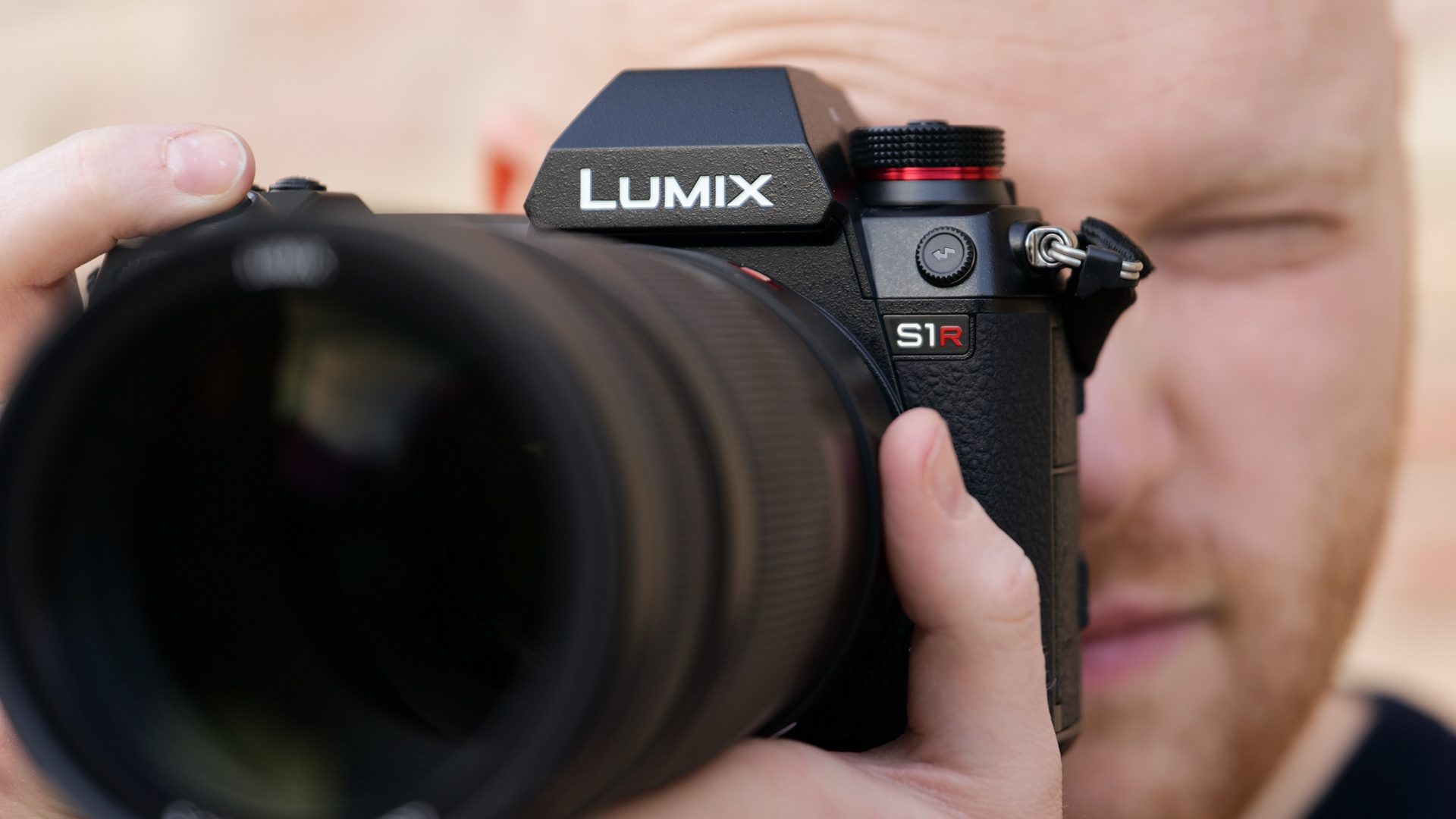
The S1R offers some very impressive tech in a supremely rugged body. The 5.7million-dot viewfinder is, without question, the most impressive on the market right at present, while stellar video quality, great image stabilisation and a huge buffer all put a large smiling on our face likewise. At the fourth dimension of its release, the 47.3MP sensor had the highest number of pixels on any full-frame mirrorless photographic camera too, although it's now been beaten by the Sony A7R IV. Its chief party trick, however, is the power to output 187MP images; quite how oftentimes y'all'll need to print your images to the size of a small country is another matter, merely this clearly gives you massive scope for extreme cropping, enlargements to all sizes and homing in on the smaller details in the scene. Nosotros accept some reservations with the autofocus arrangement, and it'southward a lilliputian on the beefy side too, merely for its combination of build, features and overall execution, the S1R scores many points.
- Read our in-depth Panasonic S1R review

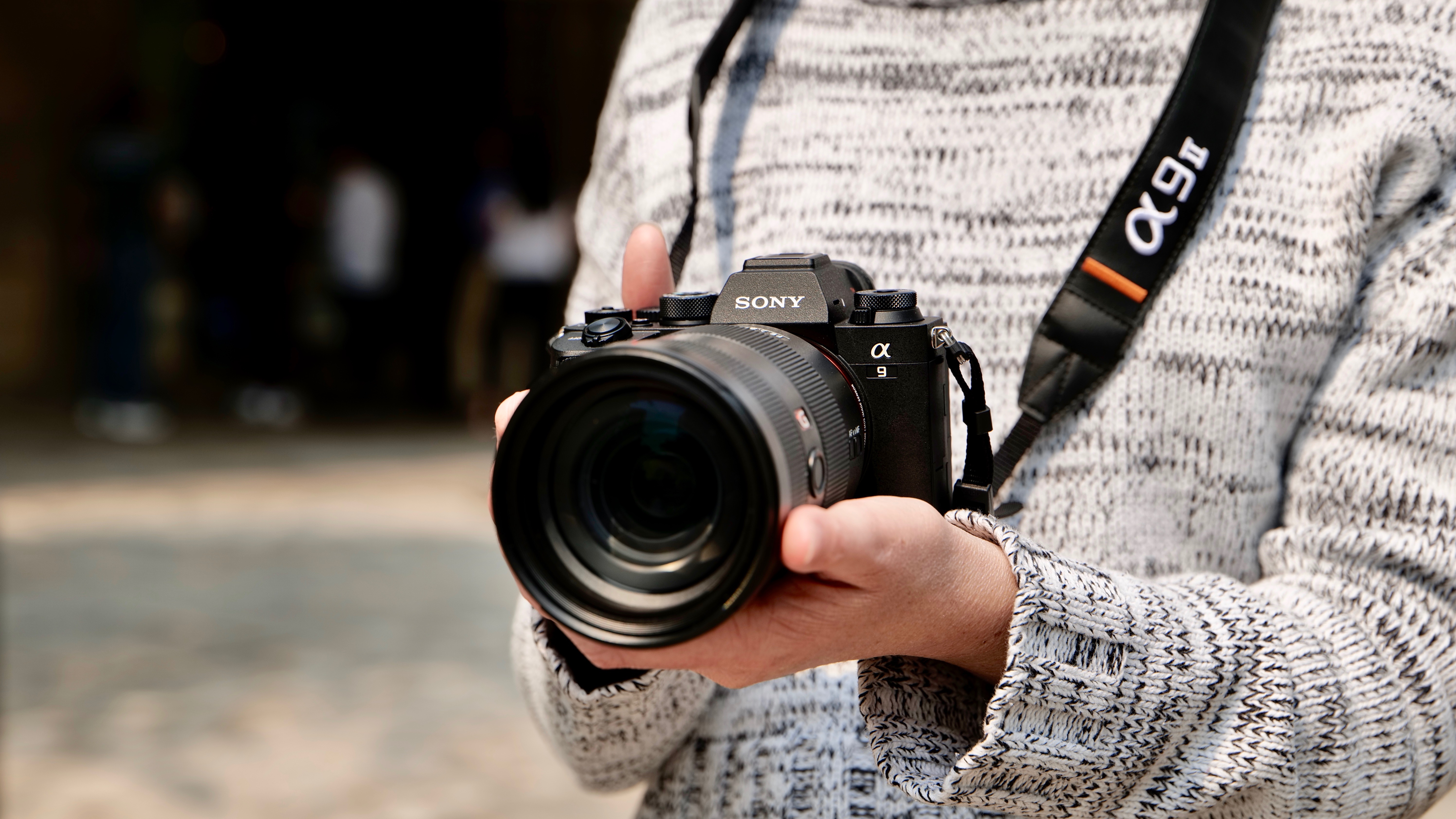
The main mirrorless rival to the incoming Catechism 1DX Mark Three and Nikon D6 for pro sports photographers, the Sony A9 II builds on the considerable foundation laid by its predecessor, calculation dozens of improvements that collectively brand it a one of the all-time cameras we've tested. The chief improvements are its deeper grip and boosted 10fps burst shooting with the mechanical shutter. These are added to the refined 693-signal AF system, which now offers fifty-fifty better subject field tracking than the original Sony A9 and is perfect for sports and wild fauna. It's not cheap, of course, merely if you're an action fan, y'all won't find a better mirrorless camera than this.
- Read our in-depth Sony Alpha A9 II review

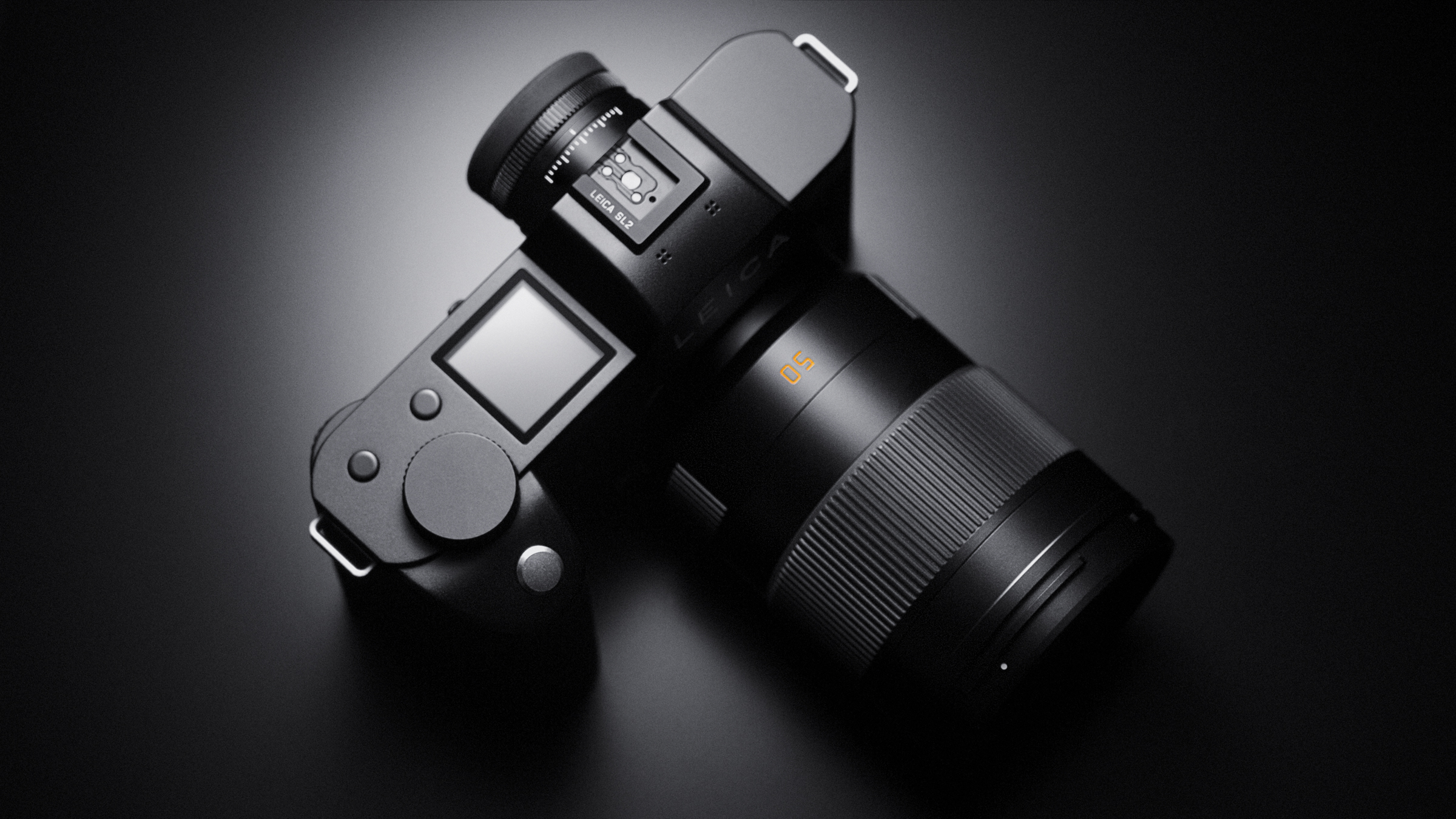
Leica'due south well-nigh mainstream mirrorless camera to date, the SL2 all the same offers a look and feel like no other full-frame mirrorless camera.
It'south a weighty animal, but a redesigned handgrip and control panel layout promise excellent ergonomics, complimented past a minimalist array of unmarked, fully customizable buttons and a refreshed user interface. It handles comfortably and feels wonderfully premium, with a distinctive shell milled from durable aluminum and magnesium alloy.
At that place's been an even greater overhaul on the inside: the Leica SL2 gets a new 47MP sensor, a new Maestro III processor, a new 225-point autofocus arrangement and a new EVF. It all makes for a package that's as fast and accurate as whatever of its Japanese rivals, delivering crisp images, plenty of dynamic range and excellent color reproduction.
Add together sensor-shift in-body image stabilization into the mix, together with 5K footage at 30p and total-width 4K DCI and UHD at 50p, and the SL2 shapes up equally an impressively versatile tool. The toll reflects both the photographic camera'south quality and that undeniable Leica experience – but the SL2 is likewise refreshingly accessible, and delivers some pretty special results.
- Read our in-depth Leica SL2 review


For almost people, the Leica Q2 Monochrom makes no sense. It only shoots in black and white, withal costs more than its very capable and total-color Q2 cousin – which means it's extremely expensive. But in the slim niche that it occupies, the Q2 Monochrom is likewise an outstanding camera.
If you've long lusted afterward Leica machinery, it represents a more affordable option than an M10 or M10 Monochrom. Despite its meaty crush, the Q2 Monochrom is heavy in the paw, with a solid build that oozes class. Its matte black body and minimalist control interface are Leica hallmarks, even so an intuitive menu organization, together with 'modernistic' features such as autofocus and Wi-Fi, make shooting and sharing simpler. The Q2 Monochom's unique combination of a 47.3MP total-frame sensor with a fixed focal length Leica Summilux 28mm f/i.seven lens produces exceptional results.
With no colour array and no interpolation algorithm, however images take an outstanding purity. There's significantly less noise than standard cameras, and then information technology'southward rubber to shoot at the maximum ISO of 6400 in everyday scenarios, making the Q2 Monochrom perfectly suited to street photography. The 'standard' Q2 is more than mainstream, but if black and white is your bag, the Q2 Monochrom certainly makes a statement.
- Read our in-depth Leica Q2 Monochrom review
As well consider...
Looking for something a bit cheaper? Here's a smashing value total-frame option:
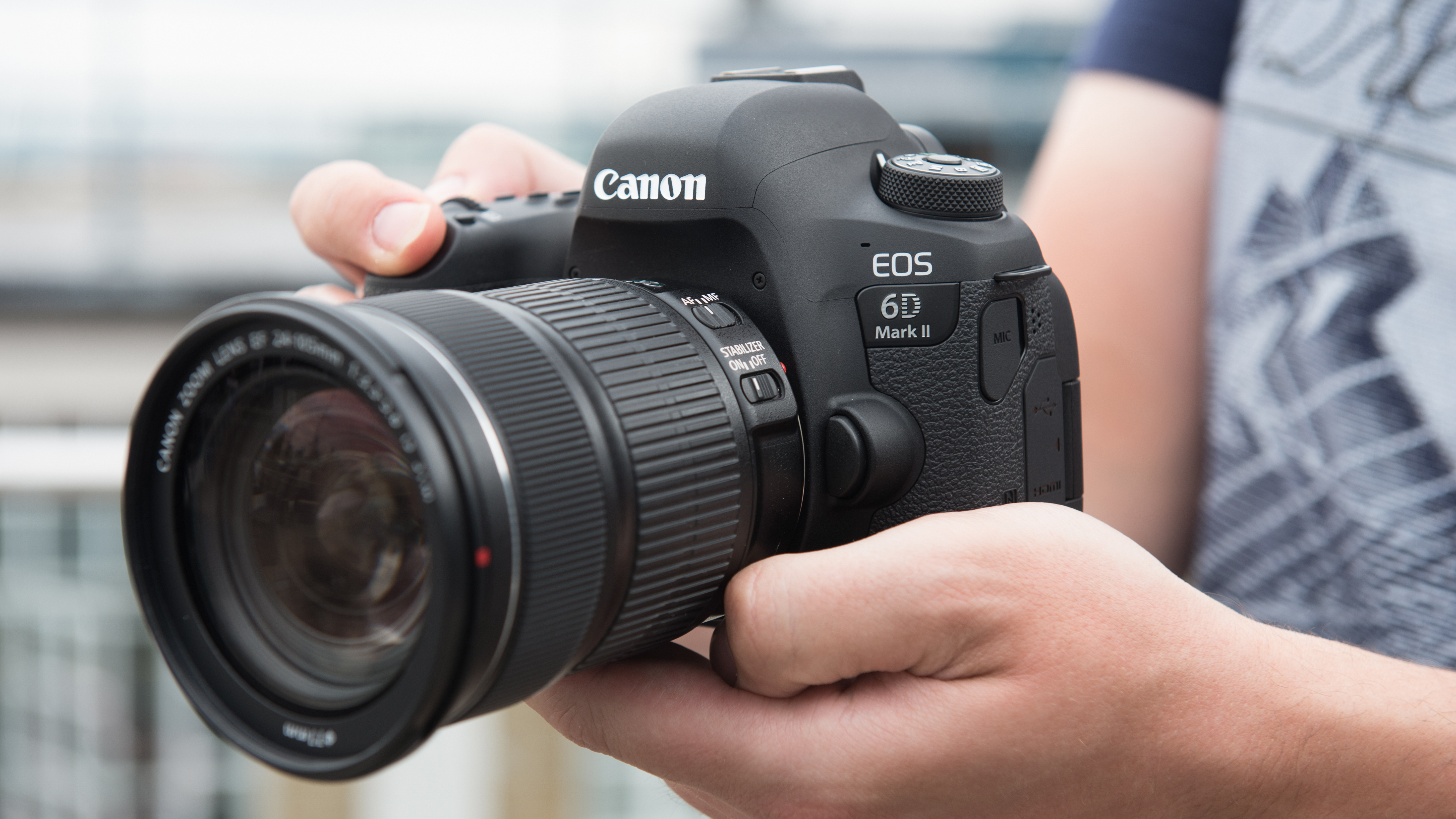
When the original EOS 6D launched, it offered the all-time bang for your buck and that trend continues with the second generation DSLR – the EOS 6D Marker Two still offers an an first-class entry into the full-frame market. Released in 2017, it has a significant bump in features over it's predecessor, including a higher sensor resolution at 26.2MP, a amend autofocus arrangement with 45 cross-blazon AF points, half-dozen.5fps burst speed and introduces touchscreen functionality to the 6D line. Performance in the existent earth is smoothen and y'all won't discover much to complain most in terms of image quality. And you get all that for around $ane,500 / £1,349 / AU$1,999, which is very good value for money.
- Read our in-depth Catechism EOS 6D Mark II review

Not sure whether to buy a DSLR or mirrorless camera? Check out our guide video beneath.

How to choose the all-time full-frame camera for you
There are several things to look for when choosing the right full-frame camera for your needs and budget. Every full-frame camera volition feature a larger sensor than an APS-C or Micro 4 Thirds model, meaning y'all should benefit from improved paradigm quality and enhanced low-light performance. But at that place are a few key specs to look at in addition.
While sensor resolution is an important consideration, it'due south not always an indicator of outright image quality. The Sony A1, for example, features a 50.1MP resolution for capturing stunning stills. In contrast, our favorite total-frame camera correct now – the Canon EOS R6 – simply features a 20.1MP resolution, but that lower pixel count means bigger pixels, which can translate into better lite sensitivity for shooting in dim scenes.
Some other key factor to keep in mind is the physical dimensions of a full-frame camera. Due to the size of the sensor, full-frame cameras are inevitably larger than most mirrorless and premium meaty models. That said, some are bulkier than others. The Nikon D780, for example, is big and heavy, but the trade-off is a chunky, comfortable grip. On the flip side, the Panasonic Lumix S5 manages to clasp a total-frame sensor into a Micro 4 Thirds-fashion body that'south pocket-size nonetheless ergonomic – and more than convenient to acquit.
As for other considerations, these are the aforementioned as for any other camera purchase and will depend primarily on your style of shooting. Whether you demand a tilting touchscreen or a fully articulating screen, for example, will come down to how yous like to frame your shots. As, the relevance of 4K (or even 8K) video resolution volition be determined past your desire to shoot footage with your full-frame photographic camera. It's a similar story for connectivity and live-streaming features.
Of course, budget volition ofttimes be the most important factor, just value isn't always easy to determine. While entry-level models are usually cheaper, a more advanced but accessible camera is probable to go further with you on your photographic journey. Equally, slightly older models may non offer the most cutting-edge specs, just many go on to represent splendid value. It'due south also a good thought to proceed lens availability in mind: a total-frame camera with support for a wide range of uniform lenses will offering greater creative flexibility.
Are full-frame cameras ameliorate?
There are many reasons why you might desire to buy a full-frame photographic camera. As the name suggests, the primary advantage is sensor size. Full-frame sensors are substantially larger than those institute in APS-C, Micro Four Thirds and compact cameras.
That actress sensor size can be used in a few ways. Some total-frame cameras fill their sensor with more than pixels, to record stills at higher resolutions. The Canon EOS R5 shoots images at a 45MP resolution, for case, while the Sony A1 captures snaps at fifty.1MP.
Alternatively, a full-frame sensor with a lower resolution can benefit from bigger pixels, which tin can capture more lite in a detail scene and enhance low-light performance.
Either way, full-frame cameras volition generally be able to shoot higher quality images in a given scene, particularly in more than challenging lighting. The trade-off is often body size, which needs to be larger to make infinite for the larger sensor. In that location are a few more compact full-frame camera options, such equally the Panasonic Lumix S5, but travelers might find that a mirrorless model or premium compact is more suited to their needs.
Whether full-frame cameras are improve in other ways will depend on what and how you lot like to shoot. A larger sensor doesn't necessarily mean that a full-frame camera will shoot at higher burst speeds than a APS-C mirrorless model, for example, or that it will have faster autofocus. That'southward why it's important to consider all of a camera's specs and features when selecting one that'south right for you, not just its sensor size.

How we test full-frame cameras
Buying a full-frame photographic camera these days is a big investment, then every camera in this guide has been tested extensively by us. These days, real-world tests are the most revealing way to understand a camera'due south operation and character, so we focus heavily on those, along with standardized tests for factors like ISO performance.
To start with, we look at the camera'south pattern, handling and controls to get a sense of what kind of lensman it's aimed at and who would most enjoy shooting with it. When we take information technology out on a shoot, we'll use it both handheld and on a tripod to get a sense of where its strengths lie, and test its startup speed.
When information technology comes to functioning, we use a formatted SD card and shoot in both raw and JPEG (if available). For burst shooting tests, we dial in our regular test settings (i/250 sec, ISO 200, continuous AF) and shoot a series of frames in front of a stopwatch to encounter if it lives up to its claimed speeds. We'll also look at how speedily the buffers clears and repeat the test for both raw and JPEG files.
In diverse lighting conditions, we as well examination the camera'south different autofocus modes (including Face and Heart AF) in single bespeak, surface area and continuous modes. Nosotros as well shoot a range of photos of unlike styles (portrait, landscape, low light, macro/close-upward) in raw and JPEG to become a sense of metering and its sensor's ability to handle noise and resolve fine detail.
If the camera'southward raw files are supported by Adobe Camera Raw, nosotros'll also procedure some examination images to run into how we can push button areas like shadow recovery. And we'll also test its ISO performance beyond the whole range to get a sense of the levels we'd exist happy to button the camera to.
Bombardment life is tested in a existent-world fashion, equally we employ the camera over the class of the 24-hour interval with the screen set to the default settings. Once the battery has reached zero, we'll and so count the number of shots to encounter how it compares to the camera'southward CIPA rating. Finally, we test the photographic camera's video skills by shooting some test footage at dissimilar frame-rates and resolutions, along with its companion app.
We then have everything we've learned about the camera and factor in its price to get a sense of the value-for-money it offers, before reaching our concluding verdict.
- Best photographic camera
- Best entry-level DSLR
- Best DSLR
- Best mirrorless photographic camera
- Best 4K photographic camera
- Best compact camera
- What photographic camera should I buy?
- Mirrorless vs DSLR: x cardinal differences
- Photographic camera rumors


Source: https://www.techradar.com/news/best-full-frame-camera
Posted by: hernandezouldives.blogspot.com



0 Response to "Is The Nikon D400 A Full Frame Camera?"
Post a Comment